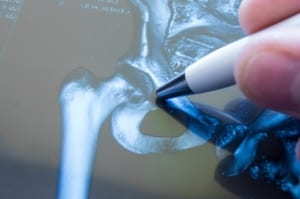Herzliya Medical Center
Tel: +972-9-959-4888
09:00-18:00
 A hip fracture is a very serious injury (break in the proximal femur), especially for people of advanced age. Treatment of hip fractures in Israel at Herzliya Medical Center works to restore the integrity of the femur (thighbone), preserving the patient’s mobility and preventing future complications, as well as shortening their rehabilitation.
A hip fracture is a very serious injury (break in the proximal femur), especially for people of advanced age. Treatment of hip fractures in Israel at Herzliya Medical Center works to restore the integrity of the femur (thighbone), preserving the patient’s mobility and preventing future complications, as well as shortening their rehabilitation.
The femur is the largest bone in the human body. The bones of younger individuals are more durable and resistant to mechanical stress than older individuals. Hip fractures in young patients are incurred externally; often a result of serious injuries such as car accidents or falls from great heights.
Bone density decreases with age – a process is known as osteoporosis. The likelihood of fractures increases dramatically. A hip fracture may occur from a slight fall, it becomes increasingly common among those aged 60 and above. Severe osteoporosis fracture occurs almost at rest (for example, when transferring weight from one lower extremity to the other). Particularly vulnerable is the femur, located on the border of the hip joint – the femoral neck.
Immediately after the injury occurs, the patient experiences the following symptoms:
Fracture of the femur can threaten the loss of mobility, disability, and dependence on outside help. Pain, fear of re-injury and other limitations require the fracture patient to restrict their movements for a long period of time, which may consequently lead to the development of more serious complications. These include:
Fractures of the femur and pelvis are distinctly visualized on radiographs. In some cases, it is necessary to make use computer tomography or magnetic resonance imaging (MRI) to diagnose bone damage, breakage location, nature of the fracture (simple, comminuted, displaced, etc.) and assist in making plans for treatment.
A tailored approach is applied to determine the fracture’s localization (position in relation to the hip joint), the severity of lesions (including the presence of a fracture of the pelvis), the patient’s age and overall health.
Techniques used for hip fracture surgery are categorized as follows:
The aim of hip fracture recovery in Israel is to restore the patient’s mobility, maintain range of motion in joints and prevent future complications associated with prolonged immobility. From the first day the procedure is carried out, physical movement is recommended in small increments; get out of bed, move using a walker or crutches while in the hospital, and perform muscle strengthening exercises.
Physical therapy must continue at home after a stay in the hospital. Before release from the hospital, the patient will receive specialist advice to readapt to everyday difficulties as they heal. Physical therapists teach the patient to perform various practical skills: self-dressing, personal hygiene, etc.
To prevent recurrent hip fractures in Israel, the patient can be prescribed preventive drugs – bisphosphonates, which inhibit the natural process of bone loss and work to prevent osteoporosis. Bisphosphonates can be taken in tablet form or by intravenous injection.
Using the most advanced surgical equipment and medical techniques, experts at HMC in Israel effectively treat the most complex hip fracture cases, including the elderly. The high-quality treatment has led to successful rehabilitation from hip fracture treatment in Israel, yielding greater patient independence and a higher quality of life.